Wade Wilson’s face tattoos, a disturbing display of hate symbols and violent rhetoric, appeared after his arrest in 2019. This article from tattooat.com explores the timeline, meaning, and impact of these markings. If you are looking for inspiring and safe body art, and the best tattoo artists in the US, tattooat.com offers many ideas. We also want to inform you of the dangers of hate symbols.
1. Who is Wade Wilson?
Wade Wilson is a convicted double murderer, known as the “Deadpool Killer,” who received the death penalty for the brutal slayings of Kristine Melton and Diane Ruiz. His case gained notoriety not only for the heinous nature of his crimes but also for the shocking transformation of his appearance through white supremacist tattoos acquired while in prison.
What crimes did Wade Wilson commit?
Wilson was convicted of murdering Kristine Melton, 35, and Diane Ruiz, 43. He was also convicted of battery against his ex-girlfriend, Melissa Montanez. The jury found aggravating factors in his crimes, including that they were especially heinous, atrocious, or cruel.
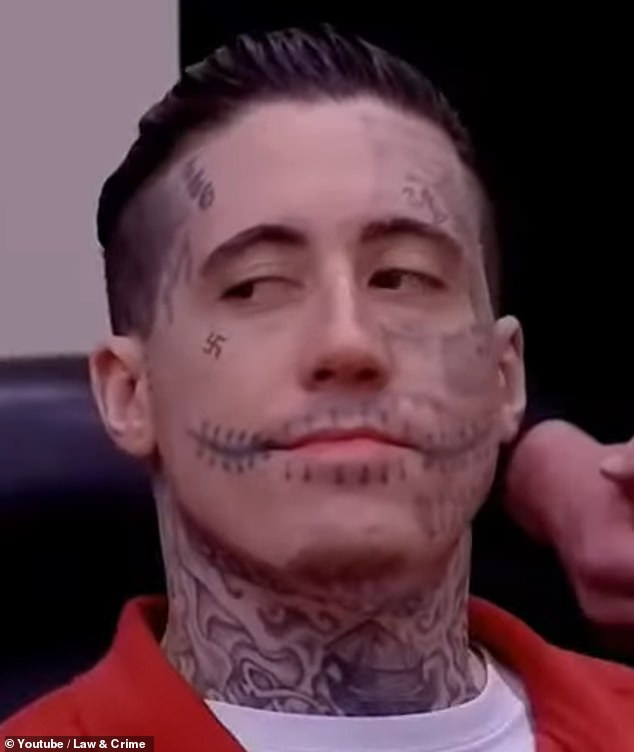 Wade Wilson in court with several face tattoos
Wade Wilson in court with several face tattoos
2. What is the Significance of Wade Wilson’s Face Tattoos?
Wilson’s face tattoos are significant because they represent a disturbing embrace of white supremacist ideology and a brazen display of hatred. The tattoos, which include swastikas, numeric codes associated with white supremacist mantras, and violent phrases, serve as a visual manifestation of his hateful beliefs and affiliations.
What specific tattoos does Wade Wilson have on his face?
Wilson’s face tattoos include:
- Swastikas: Several swastikas, symbols of Adolf Hitler’s Nazi party, are prominently displayed on his face and head.
- The number 14: Located on the right side of his neck, representing the white supremacist mantra known as the 14 Words: “We must secure the existence of our people and a future for white children.”
- The number 88: Found on the left side of his neck, a numeric code for “Heil Hitler” (H is the 8th letter of the alphabet, so 88 = HH).
- “TTG”: Across his forehead, standing for either “Time To Go” or “Trained To Go,” indicating a readiness for violence.
- “Bred for war”: Underneath his chin, suggesting a propensity for violence.
- Skeletal figure: On the left side of his face, a skeletal figure saying “Why so serious,” referencing the Joker from the movie The Dark Knight.
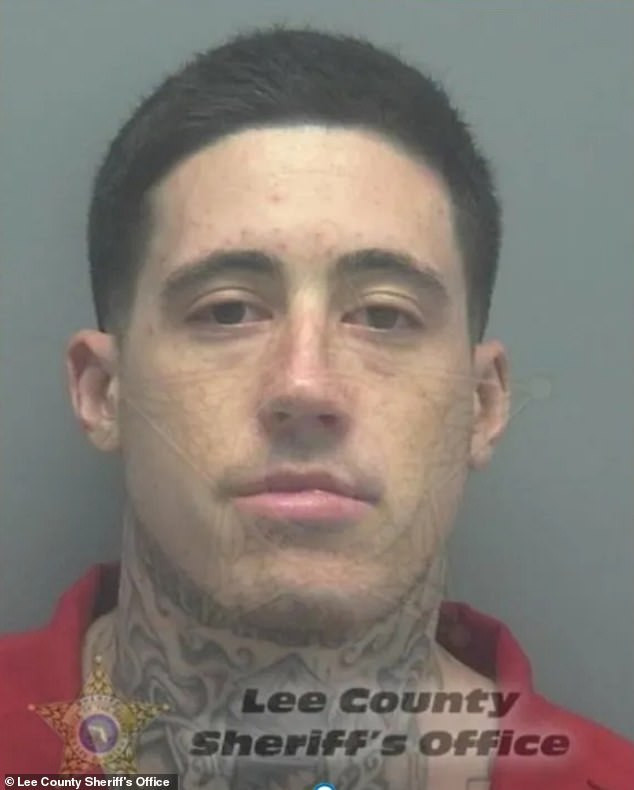 Wade Wilson with no face tattoos during his arrest
Wade Wilson with no face tattoos during his arrest
3. When Did Wade Wilson Acquire His Face Tattoos?
Wade Wilson acquired his face tattoos while in custody awaiting trial for the murders of Kristine Melton and Diane Ruiz. These tattoos were not present when he was arrested in 2019.
How did Wade Wilson get tattoos in prison?
Despite tattooing being against prison policies in Florida, Wilson managed to acquire his tattoos while incarcerated. His lawyer, Kevin Shirley, stated that Wilson “created his appearance while in custody awaiting trial” but has never expressed his reasons for doing so.
4. Why Did Wade Wilson Get Face Tattoos?
The exact reasons behind Wade Wilson’s decision to get face tattoos remain unclear, as he has not publicly stated his motivations. However, experts suggest that the tattoos are indicative of his affiliation with white supremacist prison gangs and his embrace of their hateful ideology. According to Anti-Defamation League Research Fellow Christopher Magyarics, court evidence suggests that Wilson joined the white supremacist prison gang The Unforgiven during his time in Lee County Jail in Fort Myers, Florida.
What is the significance of the “Why so serious” tattoo?
The “Why so serious” tattoo, referencing the Joker from The Dark Knight, is interpreted as an indication of Wilson’s propensity for violence and his alignment with a character known for chaos and nihilism. In the film, the Joker says, “[My father] sticks the blade in my mouth and says ‘let’s put a smile on what face’.”
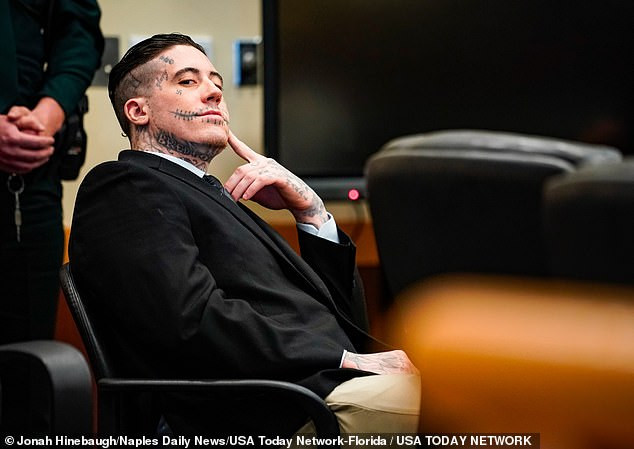 Close-up of swastikas on Wade Wilson's face
Close-up of swastikas on Wade Wilson's face
5. What is the Impact of Wade Wilson’s Tattoos?
Wade Wilson’s tattoos have a significant impact due to their hateful and violent nature. They serve as a disturbing symbol of white supremacy and contribute to a climate of fear and intimidation. The tattoos also highlight the issue of prison radicalization and the challenges of preventing inmates from embracing extremist ideologies.
How did the tattoos affect the public’s perception of Wade Wilson?
The tattoos amplified the public’s perception of Wilson as a sinister and remorseless individual. The visual display of hate symbols on his face reinforced the gravity of his crimes and sparked outrage and condemnation.
6. What is the Connection Between Wade Wilson’s Tattoos and White Supremacy?
Wade Wilson’s tattoos are deeply connected to white supremacy, as they incorporate symbols and phrases that are central to white supremacist ideology. The swastikas, the numbers 14 and 88, and the phrase “Bred for war” all serve as visual markers of his adherence to racist and hateful beliefs.
What is the “14 Words” mantra?
The “14 Words” is a white supremacist mantra coined by David Lane, an American white supremacist who died in prison in 2007. It states: “We must secure the existence of our people and a future for white children.” This mantra is often followed by a secondary slogan: “Because the beauty of the White Aryan woman must not perish from the earth.”
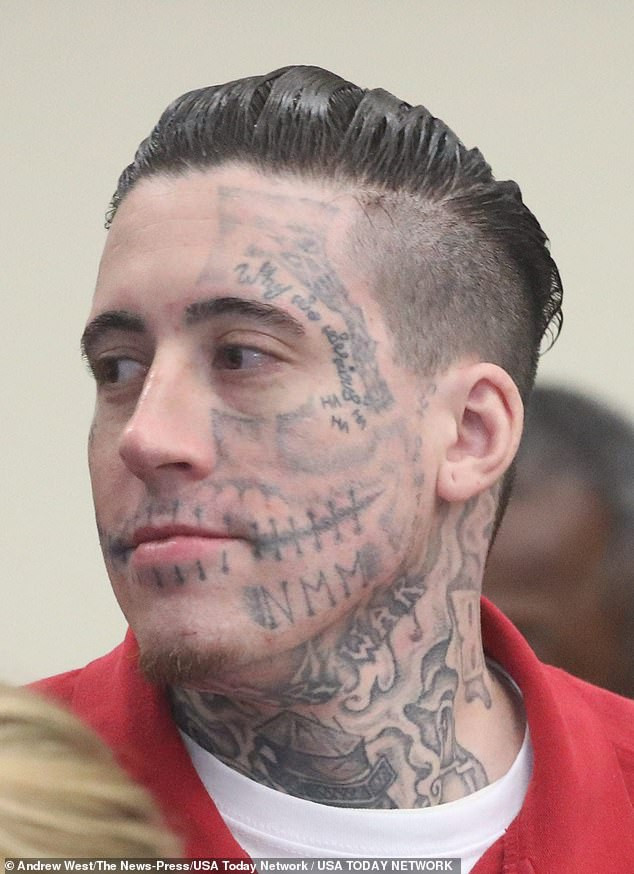 Close-up of skeletal figure tattoo on Wade Wilson's face
Close-up of skeletal figure tattoo on Wade Wilson's face
7. What is the Anti-Defamation League’s (ADL) Stance on White Supremacist Tattoos?
The Anti-Defamation League (ADL) recognizes white supremacist tattoos as hate symbols and works to educate the public about their meaning and significance. The ADL emphasizes that these tattoos are not merely personal expressions but rather indicators of adherence to hateful ideologies that promote violence and discrimination. According to the ADL, the swastika is one of the most “significant and notorious hate symbols, anti-Semitism and white supremacy for most of the world.”
How does the ADL combat white supremacy?
The ADL combats white supremacy through education, advocacy, and research. They monitor extremist groups, track hate crimes, and work with law enforcement to prevent and respond to acts of violence and discrimination.
8. How Do Prison Policies Address Tattooing?
Prison policies generally prohibit tattooing due to concerns about hygiene, safety, and the potential for gang-related markings. However, enforcement of these policies can be challenging, and inmates may find ways to circumvent the rules.
What are the consequences for inmates who get tattoos in prison?
Inmates who get tattoos in prison may face disciplinary action, including loss of privileges, solitary confinement, or other penalties. However, the effectiveness of these measures in deterring tattooing varies.
9. What Are Some Examples of Other White Supremacist Tattoos?
Besides the ones on Wade Wilson, other examples of white supremacist tattoos include:
- Aryan Brotherhood symbols: These may include shamrocks, swastikas, or the letters AB.
- Confederate flags: Symbols of the Confederacy, often used to represent racial prejudice.
- Celtic crosses: While not inherently racist, they are sometimes used by white supremacists as a symbol of their heritage.
- SS bolts: Referencing the Nazi Schutzstaffel.
- Tribal tattoos: Can sometimes be associated with specific white supremacist groups.
 Melissa Montanez testifying at Wade Wilson's trial
Melissa Montanez testifying at Wade Wilson's trial
10. How Can We Combat Hate Symbols and White Supremacy?
Combating hate symbols and white supremacy requires a multifaceted approach that includes education, awareness, and action. It is essential to:
- Educate ourselves and others: Learn about the history and meaning of hate symbols and the ideologies they represent.
- Challenge hateful rhetoric: Speak out against racism, discrimination, and white supremacy in all its forms.
- Support organizations that combat hate: Donate to or volunteer with organizations like the ADL that work to fight hate and promote equality.
- Promote inclusivity and diversity: Create communities and spaces that are welcoming and inclusive of people of all backgrounds.
- Report hate crimes: If you witness or experience a hate crime, report it to law enforcement.
What role does tattoo culture play in combating hate symbols?
The tattoo community can play a crucial role in combating hate symbols by:
- Refusing to create or reproduce hate tattoos: Tattoo artists have the power to refuse service to individuals seeking hate-related tattoos.
- Educating clients about the meaning of symbols: Tattoo artists can educate their clients about the potential negative connotations of certain symbols and designs.
- Promoting positive and inclusive imagery: Tattoo artists can use their art to promote positive messages of diversity, inclusion, and acceptance.
- Offering cover-ups for hate tattoos: Tattoo artists can help individuals who regret their hate tattoos by offering cover-up designs that transform the hateful imagery into something positive.
11. The Victims: Kristine Melton and Diane Ruiz
Kristine Melton, 35, was described by her cousin as someone who always dreamed of being a mother. In a victim impact statement, her cousin said Kristine “will never experience motherhood, a role she was born to play.”
Diane Ruiz, 43, was described as having a “magnifying personality” who “always had everybody’s back.” Both women were tragically murdered by Wade Wilson.
 Kristine Melton, victim of Wade Wilson
Kristine Melton, victim of Wade Wilson
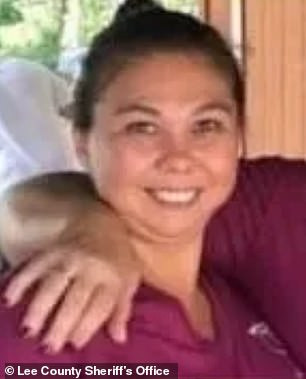 Diane Ruiz, victim of Wade Wilson
Diane Ruiz, victim of Wade Wilson
12. Legal Proceedings and Sentencing
Wade Wilson was sentenced to death for the murders of Kristine Melton and Diane Ruiz. The jury voted in favor of the death penalty 9-3 in Melton’s case and 10-2 in Ruiz’s murder. Under Florida law, only eight out of 12 jurors need to recommend a death penalty for it to be considered by a judge.
What was the reaction to Wade Wilson’s sentencing?
Others in the courtroom cheered and clapped as the ruling was handed down. “Bye Wade,” one woman said as he was escorted out of the courtroom by five police officers. “Forever,” a man sitting next to her added, according to Newsweek.
13. Conclusion: A Reminder of Hate and the Importance of Vigilance
Wade Wilson’s face tattoos serve as a chilling reminder of the existence of hate and the importance of vigilance in combating white supremacy and other forms of extremism. His case underscores the need for education, awareness, and action to create a more inclusive and equitable society.
If you’re looking for inspiration for your next tattoo, be sure to visit tattooat.com. We offer a wide variety of designs and artists to help you find the perfect tattoo for you. Remember, tattoos can be a beautiful form of self-expression, but it’s important to choose your designs carefully and avoid anything that could be interpreted as hateful or offensive.
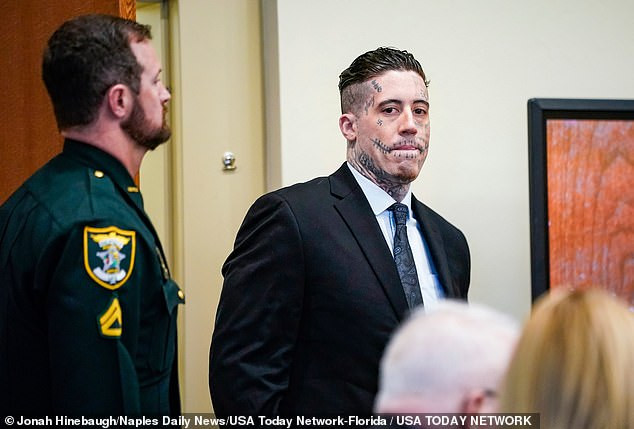 Wade Wilson being escorted from the courtroom after sentencing
Wade Wilson being escorted from the courtroom after sentencing
FAQ: Wade Wilson’s Face Tattoos
1. Did Wade Wilson have face tattoos when he was arrested?
No, Wade Wilson did not have any visible face tattoos when he was arrested in 2019. His tattoos appeared while he was in custody awaiting trial.
2. What kind of tattoos does Wade Wilson have?
Wade Wilson’s tattoos include swastikas, the numbers 14 and 88 (symbols of white supremacy), the letters “TTG,” the phrase “Bred for war,” and a skeletal figure saying “Why so serious.”
3. Where did Wade Wilson get his tattoos?
Wade Wilson got his tattoos while in jail awaiting trial. It is against prison policy in Florida.
4. Why did Wade Wilson get face tattoos?
The reasons for Wade Wilson getting the tattoos are unknown but most likely to align himself with white supremacist prison gangs.
5. What do the numbers 14 and 88 signify?
The number 14 represents the “14 Words” white supremacist mantra. The number 88 is a numeric code for “Heil Hitler.”
6. What does TTG stand for?
“TTG” stands for either “Time To Go” or “Trained To Go,” indicating a readiness for violence.
7. What does “Bred for war” mean?
“Bred for war” indicates his willingness to get violent, according to experts.
8. What is the significance of the “Why so serious” tattoo?
The “Why so serious” tattoo is an alignment with violence and chaos, referencing the Joker from the movie The Dark Knight.
9. What is the Anti-Defamation League?
The Anti-Defamation League is an organization that combats antisemitism and all forms of hate.
10. How can I find safe and inspiring tattoo designs?
Visit tattooat.com for a wide variety of designs and artists to help you find the perfect tattoo for you.
Address: 1825 SW Broadway, Portland, OR 97201, United States.
Phone: +1 (503) 725-3000.
Website: tattooat.com.
Ready to explore the world of tattoos? Visit tattooat.com today for inspiration, artist connections, and expert advice!